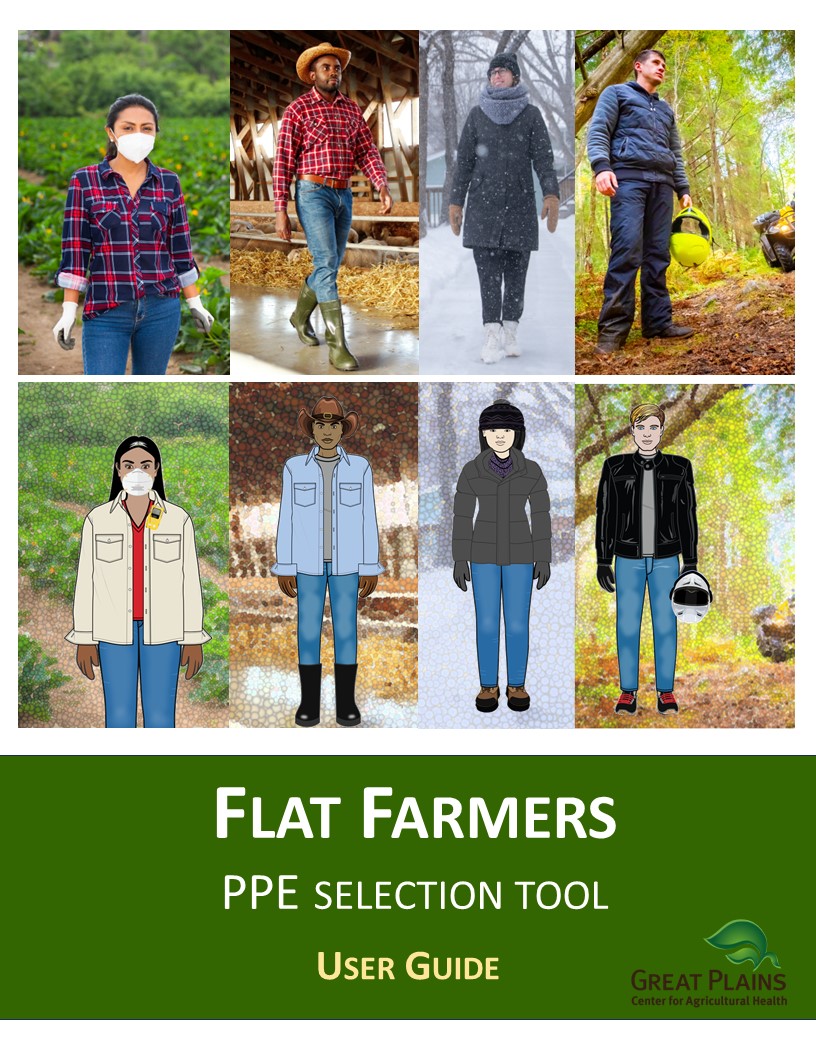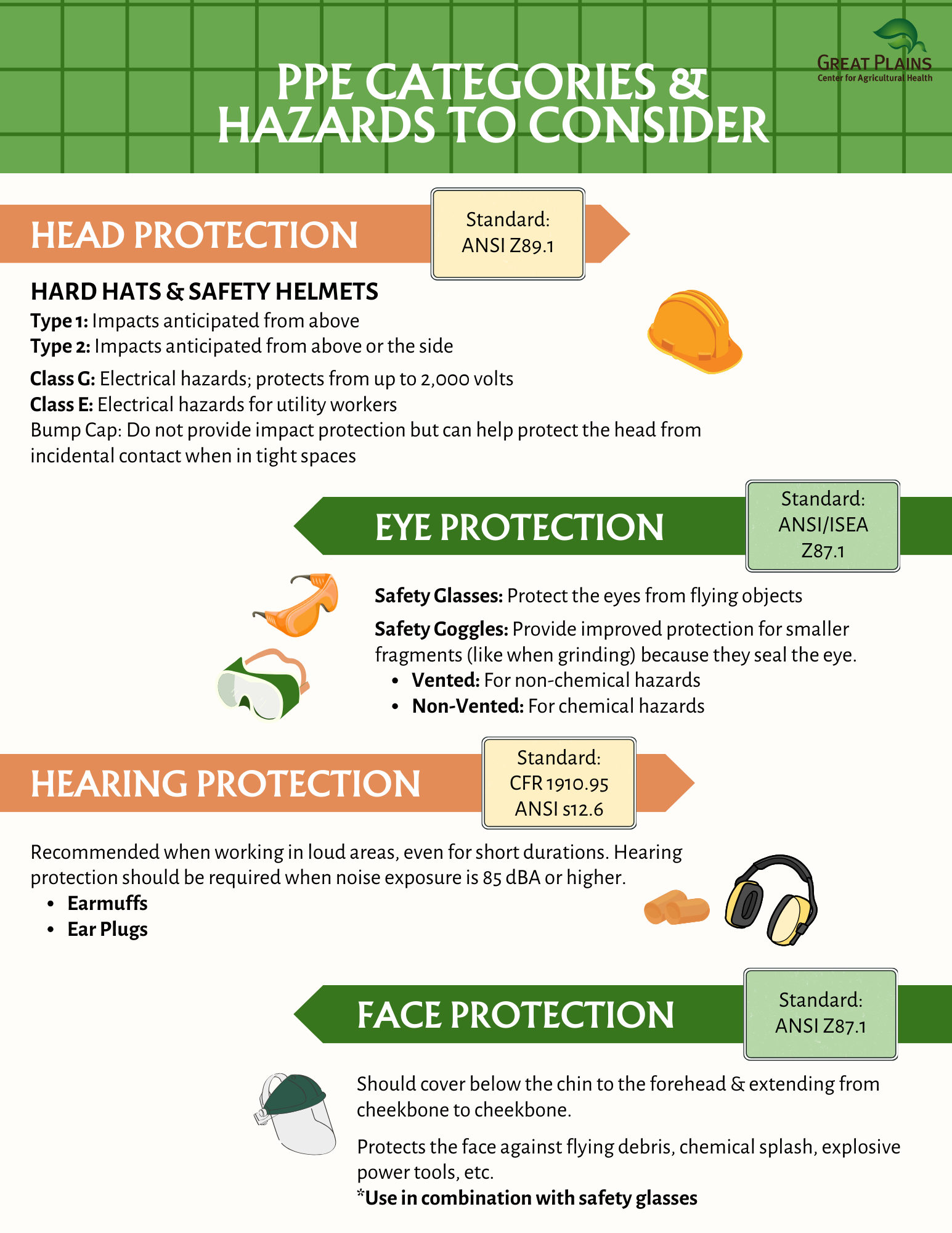Respirator Fit-Testing Train-the-Trainer Follow Up
This webpage contains details to workshop attendees that have completed the Respirator Fit-Testing Train-the-Trainer workshop, cosponsored by the GPCAH and the Ag Safety and Health Alliance.
Guidance for Respirator Fit Testing Strategy Proposal
For those who have completed the 2024 respirator fit testing workshop, you are eligible to apply for fit testing kit for your organization. To do this, you must submit a strategy for how you and your organization will use these resources to fit-test farmers and farm workers in your community. View the guidance document (pdf) for more: Strategy for Kits
Submission due dates are:
For Sept 27 2024 Workshop: December 1, 2024
Send proposals to cph-greatplainscenter@uiowa.edu
Additional Resources for Respirators On the Farm
When conducting a PPE hazard assessment for a specific task, it is important to consider the need to protect multiple parts of your body to determine if exposures present a hazard that could adversely affect you anywhere from your head to your toes. This process is outlined, in this order, below.
Respiratory Protection
Respirators should be selected based on the airborne hazard facing a worker. To select the correct respirator, we need to know the hazard (what is the gas, vapor, dust), the concentration of the hazard in the environment, and the “safe level” of that contaminant, called the “Occupational Exposure Limit” or OEL.
Respirator Cartridge Color Coding

Respirator Selection
From that information, you can determine the type of respirator based on how each of the following questions are answered:
-
- Is there sufficient oxygen (19.5%) in the environment? To use an air-purifying respirator, there MUST be sufficient oxygen to breathe.
- Is the concentration of the contaminant below the manufacturer’s maximum use concentration (MUC) of a respirator-cartridge combination? The respirator can be used safely only if the concentration in the air is LOWER than the manufacturer’s MUC.
- If below the MUC, you select the simplest type of respirator based on whether it provides enough protection. To do this, calculate the Concentration / Assigned Protection Factors (set by OSHA) for the respirator you want to use. If this ratio is below the OEL, you can use that TYPE of respirator.
The Assigned Protection Factor (APF) based on the respirator type
-
-
- Half mask and face-filtering = 10
- Powered air-purifying respirator (PAPR) = 25,
- Full face air purifying respirator = 50;
- Supplied air respirator= 1000+ (https://www.osha.gov/sites/default/files/publications/3352-APF-respirators.pdf)
-

Only NIOSH-certified respirators can be used in the US to protect workers from airborne hazards. Here is a respirator selection guide.
Respirator Resources
Respirator Fit Test Guide is the train-the-trainer guide used and provided in the Training Workshops mentioned at the top of this web page. It outlines how to conduct fit testing to make sure the respirator fits the face of the wearer as well as provides guidance to setting up a respirator fit-testing program for an organization interested in providing this service to farmers and farm workers who need/want to wear respirtory protection.
Additional information to help you determine what you need and how to take care of it is provided in these resources:
-
- Common respirator types and how they work page from the Ag Health and Safety Alliance
- How to care for your respirator motion graphic
- Respirator Seal Check poster
This guide is an example of how the concentration and hazard levels determine respiratory protection while working with poultry during avian influenza outbreaks.
Additional PPE Resources
Please visit our full resources page to see guidance on other PPE options that farmers and farm workers may need. Click here to visit: Other PPE Resources.
ADDITIONAL PPE RESOURCES
To take our introductory audible course on PPE from Ag Health 101, visit Unit 7: PPE.
To learn about interactive tools to help demonstrate PPE selection and facilitate conversations with others about PPE on the farm, visit Meet the Flat Farmers.
Download this printable Rack Card that summarizes the PPE Categories discussed on this page along with the hazards to consider.



